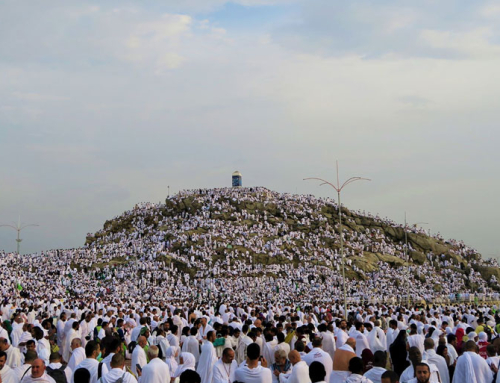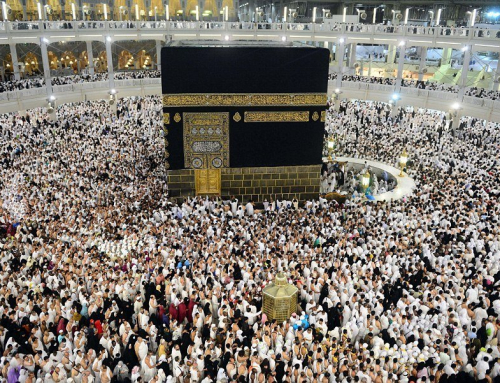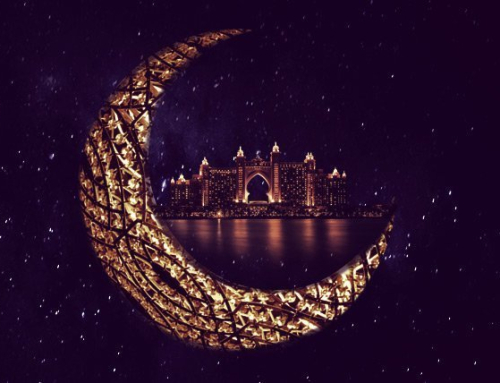Yassine Hicham
February 15, 2018
“When I am dead, will I then be raised up again?” This question may hover on the periphery of the consciousness of even those who do not have any deep convictions of the reality of life after death, but the fact remains that very few people give any direct attention to the question of the afterlife. The plain truth that tomorrow’s life is not willingly and eagerly contemplated in the present world is surely an indication of conscious or subconscious doubt as to its existence.
If, however, we give serious thought to this reality, it becomes easily comprehensible. God, wishing to put us to the test, has not divulged the secrets of life after death to us, but has spread His signs throughout the world which, if pondered over, can lead us to a true realization of the essence of all things. This universe is a mirror in which we can gaze upon the image of the next world.
It is common knowledge that human beings have not always existed in their present state. Man is derived from a formless substance, which gradually takes on the form of a human being as it grows in the mother’s womb. This process continues until, in the outside world, it develops into a full-fledged human being. The metamorphosis of an insensate, valueless substance, imperceptible to the naked-eye, into a six-foot tall human being, is an everyday event, so why should there be any difficulty in understanding how the minute particles of our bodies, after being scattered in the ground, will once again take on a human form?
Every individual one sees walking around is, in fact, an accumulation of countless atoms, previously dispersed in unknown dimensions throughout the earth and atmosphere. Presently the forces of nature brought these atoms together in one meaningful, sensate pattern, so that we are now able to observe these same scattered atoms in the form of a human being capable of thought, feeling and movement. The very same process will be repeated when, subsequent to our death, our particles are diffused in the air, water and earth. Afterwards, at God’s command, they will be reassembled and once again assume the form of a human being. What is so extraordinary about the re-occurrence of an event which has already happened once before? Even in the world of matter there are indications of the practicability of a repetition of life. Every year, in the rainy season, vegetation flourishes and greenery spreads in all directions. Then the summer pronounces its death sentence and the earth dries up. Where flowers bloomed, only a barren plain can be seen. Thus a fully-fledged life expires. But when the rains come again, and water pours down from the sky, that very same vegetation is revived and dry land once again becomes a meadow. In this very same manner man will be raised to life after his death.
Let’s look at it from another angle. Doubts occur concerning life after death because our imagination is formulated in terms of our present physical existence. We consider the mobile figure outwardly apparent to us to be the essential human being, and wonder how this form can be refashioned and raised up again once it has rotted away and mingled with the earth. We observe that when death strikes, an animate human being becomes silent; his motion is halted and all his faculties cease to function. Afterwards he is buried in the ground, cremated or thrown into a river depending on the customs of the people concerned. A few days later, the body has been reduced to tiny particles and mingled with the earth in such a way as to be undetectable to normal vision. We witness daily the extinction of live human beings in this manner and find it difficult to comprehend how a form so totally obliterated can possibly be revived.
The fact is that the word “man” refers, not to any such bodily form, but rather to the soul which inhabits the body. As far as the physical frame is concerned, we know that it is composed of tiny particles called living cells. The position of cells in our body is like that of bricks in a building. The bricks of our physical structure, or cells, are continuously destroyed in the course of our daily lives and we compensate for this loss by taking in food. Food, once digested, produces various forms of cells which counterbalance this physical deficiency. Likewise the human body is constantly being eroded and altered. Old cells are destroyed and new ones take their place. This process continues daily until eventually total renovation of the body occurs, usually within a period of ten years. To put it another way, nothing whatsoever remains now of the body you possessed ten years ago. Your present physique is an entirely new one. If all the parts of your body severed from you over the last ten years were to be gathered together, then another human being identical to yourself could be constructed. If you are a hundred years old, then ten “you’s” could be formed which, despite their exact similarity to you in appearance, would be no more than inanimate lumps of flesh for “you” do not dwell within them. “You” have abandoned these old bodies and molded yourself into a new frame.
So the saga of construction and destruction is constantly being enacted within you without any evident change occurring. That entity which you call yourself remains as it was. If you had entered into a contract with someone ten years ago, you would continue to admit that “you” committed yourself in this manner, although your previous frame is now non-existent. Neither the hands which signed the contract papers, nor the tongue which testified to it, are any longer attached to your body. Nevertheless “you” still exist, and “you” acknowledge the fact that this ten-year old contract was your own and continue to abide by it. This is that inward human being at work which, far from altering with bodily transformation, survives countless physical changes absolutely intact.
This proves that the word “homo sapiens”, rather than being a label attached to a certain physical form, which is erased with its death, is a separate entity which remains intact even after the diffusion of the body’s composite parts. The fact that the body alters whereas the soul does not, is conclusive proof of the transitional nature of the body and the eternal nature of the soul.
Some people consider life and death to be the accumulation and subsequent diffusion of multitudinous particles of matter. This, however, is a statement which is not borne out by fact. If life were simply “elements arranging themselves in order”, then it follows that it should survive only so long as this orderliness endured, and it should conversely be possible for an expert scientist to create life by an accumulation of these elements; obviously, both these propositions are ludicrous.
We observe that it is not only those who have been torn limb from limb in some accident, who die. In every condition and at every age people are passing away. Sometimes perfectly healthy human beings suffer sudden heart failure and no doctor can provide an explanation. We may regard a corpse as an “orderly, elemental manifestation”, but the soul which inhabited it has departed. All elements are arranged in the same order as they were a few minutes beforehand, but they are utterly lifeless. This shows that the organization of elemental matter does not create life, rather life is an entirely separate entity.
A live human being cannot be produced in a laboratory, though such a physical form can readily be formulated. We have ascertained that the particles which compose a live body consist of normal atoms. The carbon in it is the same as that found in charcoal, its hydrogen and oxygen are the same as that which constitutes water, its nitrogen exactly the same gas as that which accounts for most of the atmosphere, and so on. But is it true to say that a live human being is a specific collection of ordinary atoms which have been arranged in an extraordinary way? Or is it something else besides this? Scientists admit that although we know that the body has been fabricated of certain material particles, we are still not in a position to create life just by combining these same particles. In other words, the body of a live human being is not just a conglomeration of inanimate atoms; rather it is a combination of life and atoms. After death the conglomeration of atoms remains visible to us, while life departs for another world.
Clearly, life is not something which can be eliminated. When we grasp that it is something with eternal properties, we can appreciate just how rational and natural the ‘life-after-death’ theory is. The facts cry out that life does not consist merely of what can be seen prior to death. There must be a life after death also. Our intellect accepts the transient nature of this world, but man is a being which survives it. When we die, we do not pass into oblivion, rather we retire to reside in another world. The present world is nothing but a tiny interlude in our never-ending life span.















